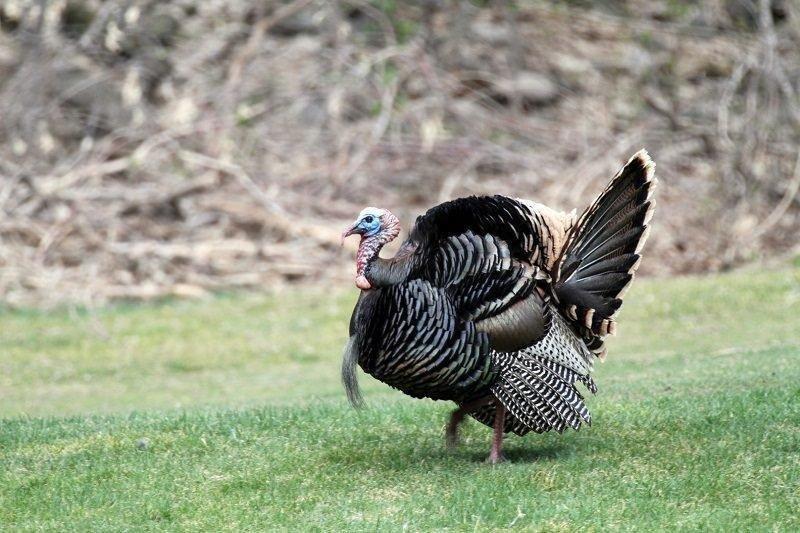DWR Press Release
General turkey hunt provides several advantages
If you want to experience the thrill of hunting a strutting, gobbling tom turkey, but you don’t have a hunting permit yet, no problem—permits to participate in Utah’s general turkey hunt are now on sale.
You can buy a permit at www.wildlife.utah.gov, from more than 300 hunting license agents across Utah and at Division of Wildlife Resources offices.
There’s no limit to the number of permits that can be sold, so you’ll have no problem getting one.
The general statewide hunt starts April 28 for those who are 17 years of age or younger. The general hunt, for hunters of all ages, starts May 1.
Turkey hunting tips
If you’re new to turkey hunting—or you just want to brush up on your skills—visit www.wildlife.utah.gov/turkeys. A series of turkey hunting videos is among the items you’ll find on the page.
General hunt advantages
The general statewide hunt is a great hunt for all turkey hunters, including those who didn’t draw a permit to hunt during the limited-entry hunt in April. Jason Robinson, upland game coordinator for the DWR, says the general hunt provides advantages you won’t find during the limited-entry hunt:
Advantage 1 – Longer season
The general hunt runs for more than four weeks, compared to three weeks for the limited-entry hunt. You’ll have more time to take a bird while enjoying springtime in the backcountry.
Advantage 2 – Better access
You’ll have more areas to hunt. Roads are usually drier in May, and there’s less snow. You’ll have better access to the birds and a wider area to hunt.
Advantage 3 – Turkeys still gobble in May
Robinson says it’s very important to hunt turkeys when the birds are gobbling. “That’s when the male turkeys, called jakes or toms, will be most receptive to your call,” he says.
Unfortunately, wet and cold weather in the spring can decrease the activity level of the birds and the amount of time they gobble. “The limited-entry hunt runs for about three weeks,” he says. “The general hunt, on the other hand, runs for four weeks. Hunting during the general hunt gives you more time to be in the field at the right time—when the turkeys are gobbling.”
Robinson says two peak gobbling periods happen in the spring. The first usually happens in mid-April—during the limited-entry hunt—when tom turkeys call aggressively during the peak of the breeding season. The second peak happens during the general hunt in May. That’s when toms call aggressively as they seek hens that haven’t bred yet or that need to breed again because their nests failed.
Advantage 4 – You might feel less crowded
The final advantage is one that might be hard to believe: you might feel like fewer hunters are in the field with you.
“After the spring hunts,” Robinson says, “we survey hunters to see how their hunts went. Even though more hunters are in the field during the general hunt, hunters consistently tell us they feel less crowded.”
Robinson thinks the perception has a lot to do with mindset. “If you draw a limited-entry permit,” he says, “you kind of expect to have the area to yourself. Even if there’s only one other hunter in the area you’re hunting, you might feel crowded. During the general hunt, hunters expect to see other hunters in the field, and they don’t seem to mind as much.”
Turkey numbers are growing
Robinson says turkeys are doing extremely well in Utah. In fact, turkeys in central and southern Utah are doing so well that DWR biologists are moving some of the birds to eastern Utah, to start new populations there. They’re also moving birds within central and southern Utah, to start new populations in new places.
Robinson says deep and persistent snow in northern Utah might reduce turkey populations in some areas in the northern part of the state. “Turkeys are tough and hardy birds, though,” he says. “They’ll recover quickly from the harsh winter we’re having.”
Overall, Robinson says wild turkeys are doing really well in Utah. “Put the birds in the right habitat,” he says, “and they’ll flourish.”
More information
More information about hunting wild turkeys in Utah is available in the 2016 – 2017 Utah Upland Game and Turkey Guidebook. The free guidebook is available at www.wildlife.utah.gov/guidebooks.
If you have questions about hunting turkeys in Utah, call the nearest Division of Wildlife Resources office or the DWR’s Salt Lake City office at 801-538-4700.


